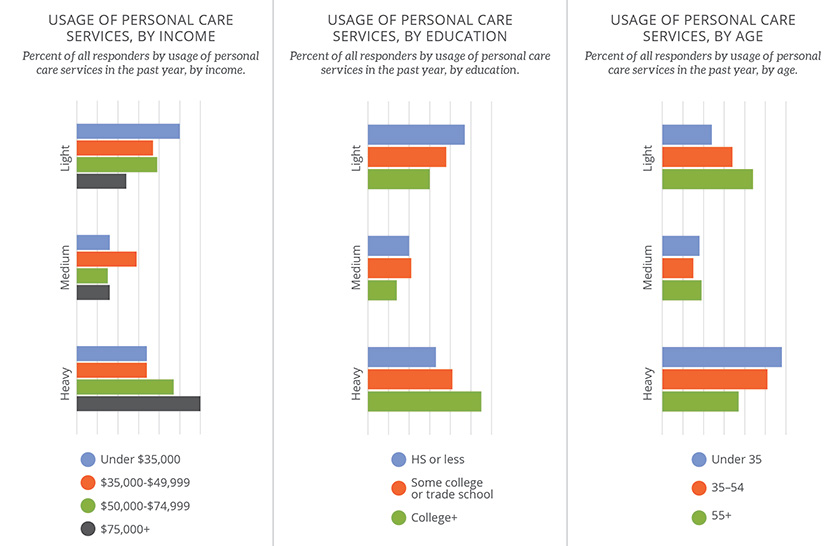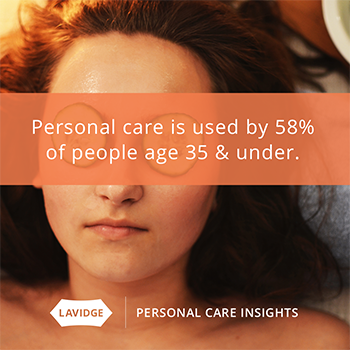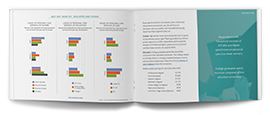Sign up for our LAVY email
and get our bi-monthly newsletter.
This article is a brief abstract of our exclusive study that takes the guesswork
out of retail services advertising and marketing.
Every day, the typical city dweller is exposed to 5,000 advertisements and brand exposures. From televisions to the mailbox, we view more marketing messages than ever before. Smartphones, radio, social media and more compete for our attention.
There are so many media choices that businesses are often challenged with deciding among them. Does a billboard make sense? How about a large poster on the side of a bus? For the many personal care businesses that often reside in neighborhood strip malls, it can sometimes be difficult to make reasoned media-buying decisions.
Wouldn’t it be great to know what ad messages retail service consumers prefer and the media they favor for messages about retail services franchises? Wonder no longer. LAVIDGE and Mosaic Multicultural recently fielded a comprehensive consumer survey of consumers throughout the Southwest. Here’s a brief media insight from the resulting report.

If you want to market to the heaviest users of retail services and related products, you should focus on consumers who are wealthy, well-educated and young. Here’s how those segments play out.
 Income: High earners have more money left over to spend on discretionary items, right? That’s generally true, and our survey supports it. At 60%, respondents with household incomes of $75,000 and higher spend more on retail services than lower earners. No surprise there.
Income: High earners have more money left over to spend on discretionary items, right? That’s generally true, and our survey supports it. At 60%, respondents with household incomes of $75,000 and higher spend more on retail services than lower earners. No surprise there.
Education: College graduates spend the most (55%) compared to less educated consumers. This is likely related to earnings; there is a strong correlation between income and educational attainment. Data from the U.S. Bureau of Labor Statistics shows the connection. Here’s the median weekly earnings for each education level.
There’s also a correlation between education and unemployment. Those without a high school diploma have an 8% unemployment rate, compared to only 1.7% of people with a doctoral degree. If you’re unemployed you’re unlikely to splurge on a weekend massage.
 Age: Here’s where it gets interesting. In our survey, younger respondents (those under 35) are a very large group of retail services users. At 58%, this age cluster topped the 35–54 age group (51%) and the 55-plus (37%).
Age: Here’s where it gets interesting. In our survey, younger respondents (those under 35) are a very large group of retail services users. At 58%, this age cluster topped the 35–54 age group (51%) and the 55-plus (37%).
Young people haven’t yet realized their top earning potential. And their total expenditures aren’t as high as those of older consumers. Data from the U.S. Department of Labor shows that those 45–54 years old have a mean household expenditure of $69,753. That compares with $52,062 for those 25–34 years old. It’s even lower ($32,797) for those under 25.
Several elements may explain why younger people are spending more on retail services than older consumers. Generally, younger people aren’t as saddled with mortgages and children as older consumers—they may still be renting or living with a parent. They are climbing corporate ladders and trying to look sharp. Also, because the average age of marriage in the United States is 28, younger people may be placing a premium on appearing attractive.
Survey responders said...
“I am concerned with living a healthy lifestyle and am trying to take care of myself.”
“So many products are full of chemicals you can’t pronounce! People want non-toxic, green and organic care that is healthy for you and the environment.”
“I prefer products that break new ground and that offer savings of time and money.”
“I appreciate quality care, but I am very smart about where I put my money. I am only willing to pay the best if something really is the best. Generally, I am going to look for the cheapest option that will meet my needs. I am a college student, so I am poor and will look for any way I can save money.”

This article is a brief abstract of our exclusive and authoritative study that takes the guesswork out of health, beauty and grooming retail services advertising and marketing. Rather than speculating about what will drive consumers to action, we've asked them.
Sign up for our LAVY email
and get our bi-monthly newsletter.